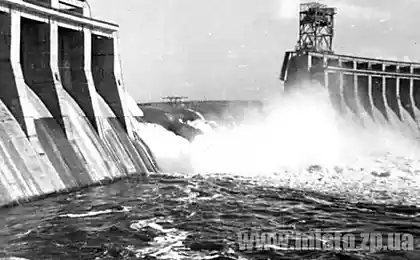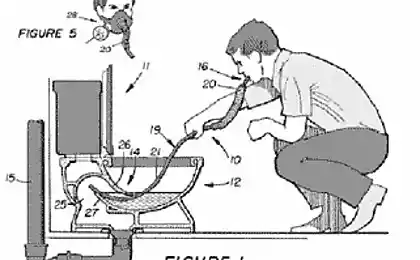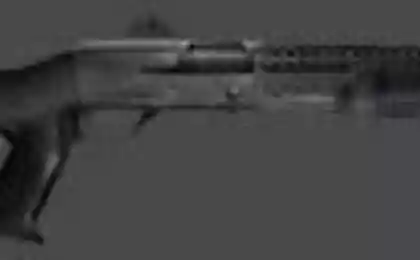615
US 5 times almost blew themselves
During the Cold War, we are constantly afraid that the United States and the Soviet Union begin a nuclear war. But much more likely we could die of its own nuclear weapons.
Incidents of nuclear weapons among the military have many ominous name - Broken Arrow, Faded Giant, YADVSPYSHKA. In fact, there were dozens of such cases, but we will tell you about the five serious accidents in the United States.
Travis AFB, 1950, Broken Arrow
During the Korean War, the US military and politicians seriously considered the use of nuclear weapons. In August 1950, 10 B-29 bombers took off from how it was then called, Fairfield-Suisun Air Base in California and moved to Guam. one of the bombers was carrying an atomic bomb Mark IV, which was twice as powerful dropped on Japan at the end of World War II.
Shortly after take-off one of the B-29 reported engine trouble. On board was General Robert Travis. He ordered the aircraft to return to base, but was refused boarding at the aircraft landing gear. Realizing that the plane falls, the pilot tried to avoid hitting a populated area around the base, and the plane crashed in the northwest corner of the base. Upon impact, killing 12 of the 20 former aboard, including General Travis. The fire detonated 5,000 pounds of explosives, which is a component of a nuclear bomb Mark IV. The explosion killed seven more people who are on the ground. If the bomb was equipped with fissile capsule, the number of victims may be counted in six figures.
US Air Force concealed the incident, saying that for a training flight were loaded with conventional bombs. A few months later, the base was renamed in honor of General Travis. Broken Arrow term used to refer to a variety of emergency to nuclear weapons, non-nuclear war.
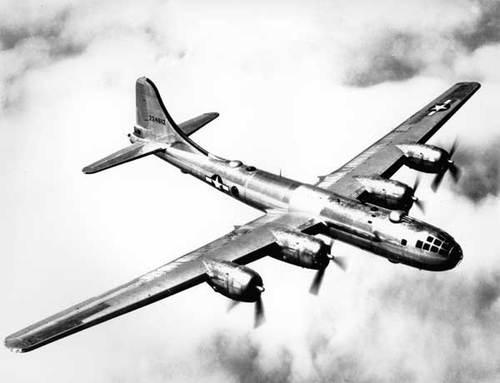
Processing reactor Fermi 1, 1966, Faded Giant
The incident was immortalized titled "When we almost lost Detroit" in the eponymous book by John Fuller.
What happened at Fermi 1 was the result of engineering errors, non-compliance with safety regulations, and just lack of experience. Engineers made changes to the cooling system, but did not enter it in the documentation, so the engineers who worked on the reactor did not know that in a tank of liquid sodium were extra dispersion plates. When one of the tanks blocked cooling pipes, the reactor core overheated to 700 degrees Fahrenheit (approx. 370C; approx. Mixednews) and partially melted.
When melting reactor overheated fuel in excess of what could handle the cooling system. This eventually led to melting of the surrounding infrastructure, such as a protective housing of the cooling system, and in extreme cases the installation base. When fully melted fuel ignites and maintains a temperature of about 2000 degrees Fahrenheit (approx. 1000C). Although the term is not used in 1966, a hypothetical (and technically impossible) chance that the molten reactor prozhgёt land through, and gets to China, gave a definition of "China Syndrome».
Fermi 1 actually is located between Detroit and Toledo, but I suppose "When we almost lost Toledo" does not sound so exciting.
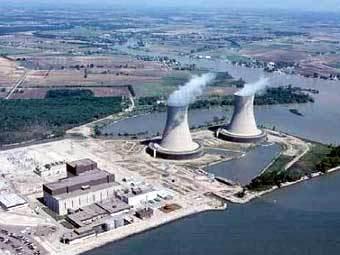
Tybee Island, 1958 - Broken Arrow
In the waters near Tybee Island, Giorgio, on the border of Georgia and South Carolina, at a depth of about 10 feet (3m) rests hydrogen bomb. Is it there for almost 50 years.
In 1958, the B-47 bomber «Stratojet» during a training exercise crashed. On board he was carrying a hydrogen bomb Mark 15 - an easy bomb 12 feet long, armed 400 pounds of explosives and highly enriched uranium. The crew of the wrecked aircraft tolerating decided at an emergency landing they did not want to carry on board such dangerous goods, and requested permission to drop the bomb into the ocean. Upon impact on the water it did not explode, and no one since it is no longer seen.
There is some disagreement as to whether the bomb was fully armed. Some reports suggest that there was, but the Air Force officially announced that the inside was a training capsule. Attempts were made to find her, but the natural radiation of the earth is extremely difficult investigative measures. If she was armed, and if detonated, the Savannah located Exploring the city virtually disappeared from the face of the earth.

Idaho Falls, 1961 - Faded Giant
It was a potentially serious disaster and populated areas exposed to radioactive gas. But the incident in Idaho Falls stands out in a number of nuclear accidents as the most terrible catastrophe, but it is relatively little known.
SL-1 reactor was experimental, and is administered by the army near Idaho Falls. Third January 1961 all awakened siren alarm. Urgent came a nearby staff for emergencies. Because of the high radiation they could not get through to the cockpit controls and a half hours. When they finally did, they found the two victims, one of whom still showed signs of life (he died shortly afterwards). Even after the victim was carried out of the building where the reactor body of the people were so radioactive that they had to be buried in lead cemeteries.
The worst was yet to come. A few days later the emergency services found the third operator. When the incident occurred, he stood at the top of the reactor. Force of the explosion ripped the control rods, and those passing through his chest, the body nailed to the ceiling.
The cause of the incident was the operator to control the speed of reaction. Sustained response requires that each cycle of division generate enough neutrons to split additional atoms, producing the next cycle of division. Operated via a control rod of a material absorbing the neutrons safely. Enter a few elements of the control rods into the reactor slows the reaction. SL-1 is being serviced, in which the control rods were required to pull a few inches. Since the reactor design involves the use of one large control rod, the only error (pulling the bar is almost entirely) has led to supercritical instant reaction - division cycle, which increases exponentially.
The massive jump in energy output vaporized cooling water, and a portion of the reactor, resulting in causing a massive explosion which led to the termination of the reaction. So it is possible to write a book, "The day when we almost lost Idaho Falls».
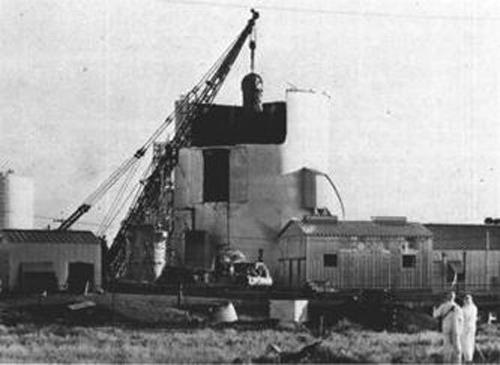
NORAD, 1979 - YADVSPYSHKA (almost)
Here's how NORAD taught that it is not necessary to work with the computer simulation of nuclear attack by the Soviet Union, using systems that respond to the real nuclear attack. Missile Defense Agency received disturbing testimony that an entire armada of Soviet nuclear warheads directed to the United States. It rose in the air combat aircraft, curb nuclear weapons. Secure aircraft president was also raised in the air (though at that time he was not there).
Finger froze over the button. Commanders of flight crews were waiting for orders to attack. For six tense minutes, no one was sure that this is not World War III ... and oddly enough, no one used the "red telephone" hot line with the Soviets. Finally, from satellites and early warning radar signal came that no nuclear attack is not fixed. The culprit turned out to be commotion training record, generating false positive signals that inadvertently included. In the jargon of the military YADVSPYSHKA is a real nuclear explosion, which could lead to nuclear war.
If all vysheozvuchennoe not look intimidating enough, then there are several dozens of similar incidents in the US alone. Here we can recall the famous Cuban missile crisis. The sad morality is that it would be wiser to fear less overt aggression than their own incompetence and poor technique.
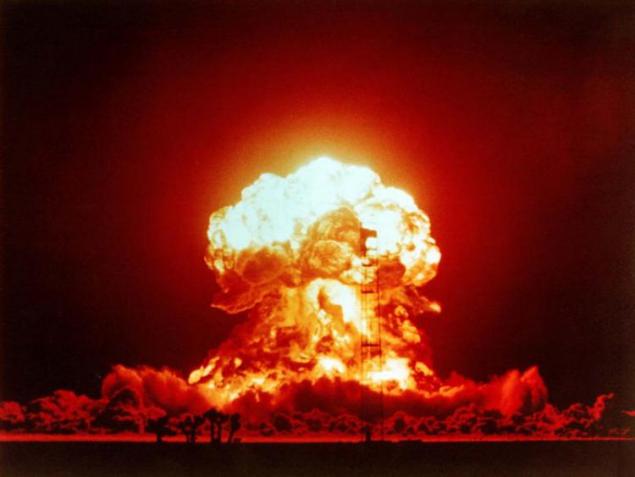
Source:
Incidents of nuclear weapons among the military have many ominous name - Broken Arrow, Faded Giant, YADVSPYSHKA. In fact, there were dozens of such cases, but we will tell you about the five serious accidents in the United States.
Travis AFB, 1950, Broken Arrow
During the Korean War, the US military and politicians seriously considered the use of nuclear weapons. In August 1950, 10 B-29 bombers took off from how it was then called, Fairfield-Suisun Air Base in California and moved to Guam. one of the bombers was carrying an atomic bomb Mark IV, which was twice as powerful dropped on Japan at the end of World War II.
Shortly after take-off one of the B-29 reported engine trouble. On board was General Robert Travis. He ordered the aircraft to return to base, but was refused boarding at the aircraft landing gear. Realizing that the plane falls, the pilot tried to avoid hitting a populated area around the base, and the plane crashed in the northwest corner of the base. Upon impact, killing 12 of the 20 former aboard, including General Travis. The fire detonated 5,000 pounds of explosives, which is a component of a nuclear bomb Mark IV. The explosion killed seven more people who are on the ground. If the bomb was equipped with fissile capsule, the number of victims may be counted in six figures.
US Air Force concealed the incident, saying that for a training flight were loaded with conventional bombs. A few months later, the base was renamed in honor of General Travis. Broken Arrow term used to refer to a variety of emergency to nuclear weapons, non-nuclear war.

Processing reactor Fermi 1, 1966, Faded Giant
The incident was immortalized titled "When we almost lost Detroit" in the eponymous book by John Fuller.
What happened at Fermi 1 was the result of engineering errors, non-compliance with safety regulations, and just lack of experience. Engineers made changes to the cooling system, but did not enter it in the documentation, so the engineers who worked on the reactor did not know that in a tank of liquid sodium were extra dispersion plates. When one of the tanks blocked cooling pipes, the reactor core overheated to 700 degrees Fahrenheit (approx. 370C; approx. Mixednews) and partially melted.
When melting reactor overheated fuel in excess of what could handle the cooling system. This eventually led to melting of the surrounding infrastructure, such as a protective housing of the cooling system, and in extreme cases the installation base. When fully melted fuel ignites and maintains a temperature of about 2000 degrees Fahrenheit (approx. 1000C). Although the term is not used in 1966, a hypothetical (and technically impossible) chance that the molten reactor prozhgёt land through, and gets to China, gave a definition of "China Syndrome».
Fermi 1 actually is located between Detroit and Toledo, but I suppose "When we almost lost Toledo" does not sound so exciting.

Tybee Island, 1958 - Broken Arrow
In the waters near Tybee Island, Giorgio, on the border of Georgia and South Carolina, at a depth of about 10 feet (3m) rests hydrogen bomb. Is it there for almost 50 years.
In 1958, the B-47 bomber «Stratojet» during a training exercise crashed. On board he was carrying a hydrogen bomb Mark 15 - an easy bomb 12 feet long, armed 400 pounds of explosives and highly enriched uranium. The crew of the wrecked aircraft tolerating decided at an emergency landing they did not want to carry on board such dangerous goods, and requested permission to drop the bomb into the ocean. Upon impact on the water it did not explode, and no one since it is no longer seen.
There is some disagreement as to whether the bomb was fully armed. Some reports suggest that there was, but the Air Force officially announced that the inside was a training capsule. Attempts were made to find her, but the natural radiation of the earth is extremely difficult investigative measures. If she was armed, and if detonated, the Savannah located Exploring the city virtually disappeared from the face of the earth.

Idaho Falls, 1961 - Faded Giant
It was a potentially serious disaster and populated areas exposed to radioactive gas. But the incident in Idaho Falls stands out in a number of nuclear accidents as the most terrible catastrophe, but it is relatively little known.
SL-1 reactor was experimental, and is administered by the army near Idaho Falls. Third January 1961 all awakened siren alarm. Urgent came a nearby staff for emergencies. Because of the high radiation they could not get through to the cockpit controls and a half hours. When they finally did, they found the two victims, one of whom still showed signs of life (he died shortly afterwards). Even after the victim was carried out of the building where the reactor body of the people were so radioactive that they had to be buried in lead cemeteries.
The worst was yet to come. A few days later the emergency services found the third operator. When the incident occurred, he stood at the top of the reactor. Force of the explosion ripped the control rods, and those passing through his chest, the body nailed to the ceiling.
The cause of the incident was the operator to control the speed of reaction. Sustained response requires that each cycle of division generate enough neutrons to split additional atoms, producing the next cycle of division. Operated via a control rod of a material absorbing the neutrons safely. Enter a few elements of the control rods into the reactor slows the reaction. SL-1 is being serviced, in which the control rods were required to pull a few inches. Since the reactor design involves the use of one large control rod, the only error (pulling the bar is almost entirely) has led to supercritical instant reaction - division cycle, which increases exponentially.
The massive jump in energy output vaporized cooling water, and a portion of the reactor, resulting in causing a massive explosion which led to the termination of the reaction. So it is possible to write a book, "The day when we almost lost Idaho Falls».

NORAD, 1979 - YADVSPYSHKA (almost)
Here's how NORAD taught that it is not necessary to work with the computer simulation of nuclear attack by the Soviet Union, using systems that respond to the real nuclear attack. Missile Defense Agency received disturbing testimony that an entire armada of Soviet nuclear warheads directed to the United States. It rose in the air combat aircraft, curb nuclear weapons. Secure aircraft president was also raised in the air (though at that time he was not there).
Finger froze over the button. Commanders of flight crews were waiting for orders to attack. For six tense minutes, no one was sure that this is not World War III ... and oddly enough, no one used the "red telephone" hot line with the Soviets. Finally, from satellites and early warning radar signal came that no nuclear attack is not fixed. The culprit turned out to be commotion training record, generating false positive signals that inadvertently included. In the jargon of the military YADVSPYSHKA is a real nuclear explosion, which could lead to nuclear war.
If all vysheozvuchennoe not look intimidating enough, then there are several dozens of similar incidents in the US alone. Here we can recall the famous Cuban missile crisis. The sad morality is that it would be wiser to fear less overt aggression than their own incompetence and poor technique.

Source:











